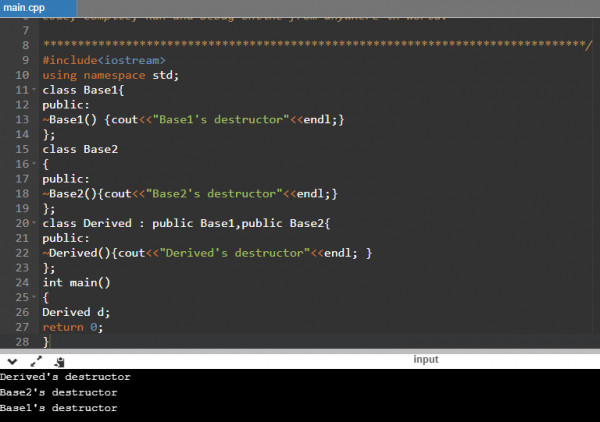Answer: (B)
Base class constructors are called first and the derived class constructors are called next in single inheritance. Destructor is called in reverse sequence of constructor invocation, i.e., The destructor of the derived class is called first and the destructor of the base is called next.
